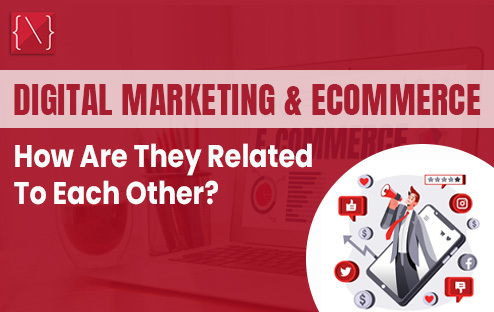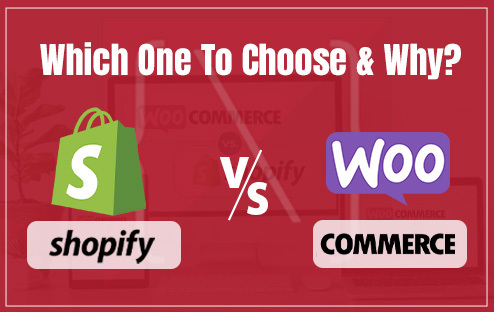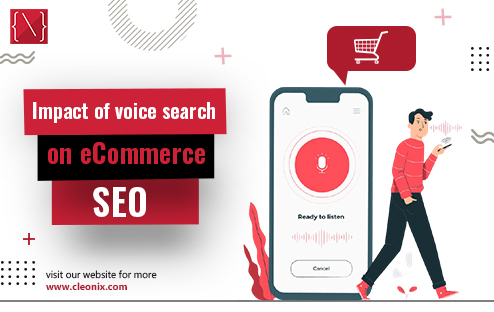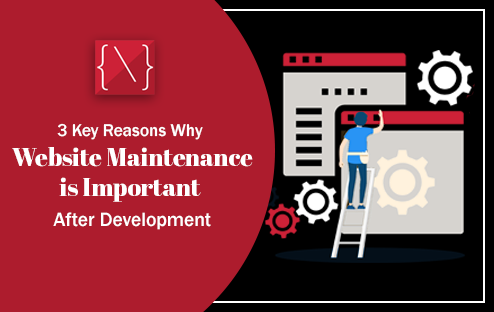
Digital marketing and ecommerce are two buzzwords that have been dominating the business world in recent years. With the rise of technology and internet usage, these two concepts have become crucial for the success of any business, big or small. While some may think that they are separate entities, the truth is that they are deeply interconnected and rely on each other for growth and success.
To understand the relationship between digital marketing and ecommerce, let’s first define both terms. Digital marketing is the use of various digital channels such as social media, search engines, email, and websites to reach and engage with potential customers. On the other hand, ecommerce refers to the buying and selling of goods and services online. It includes everything from online shopping platforms to online banking and other online transactions.
Now, let’s dive deeper into how digital marketing and ecommerce are related to each other.
Increased Reach and Visibility
One of the main goals of digital marketing is to increase a business’s online presence and reach its target audience. With the use of various digital channels, businesses can reach a wider audience than traditional marketing methods. This, in turn, helps to increase brand awareness and visibility. With more people being aware of a brand’s existence, the chances of attracting potential customers and increasing sales also increases.
Ecommerce, on the other hand, provides businesses with a platform to showcase and sell their products or services online. With an ecommerce website, businesses can reach a global audience, expanding their reach and customer base even further. Digital marketing and ecommerce work hand in hand to increase a business’s reach and visibility, making it easier for them to connect with their target audience and potential customers.
Personalization and Targeting
Digital marketing offers businesses the ability to personalize their messages and target specific audiences based on their interests, demographics, and online behavior. This level of personalization helps businesses to create more relevant and tailored marketing campaigns, which, in turn, increases the chances of conversion.
Ecommerce also allows for personalization through features such as product recommendations and personalized offers based on a customer’s purchase history. This enhances the overall shopping experience for customers, making them more likely to return and make repeat purchases. Digital marketing and ecommerce work together to provide a more personalized and targeted approach, making it easier for businesses to attract and retain customers.
Data and Analytics
Digital marketing and ecommerce both rely heavily on data and analytics to measure their success and make informed decisions. With digital marketing, businesses can track and analyze various metrics such as website traffic, social media engagement, email open rates, and more. This data provides valuable insights into customer behavior and preferences, which can be used to optimize marketing strategies and campaigns.
Ecommerce platforms also provide businesses with data on customer behavior, purchase patterns, and more. This data can be used to improve the user experience, optimize product offerings, and make data-driven decisions to increase sales and revenue. The integration of digital marketing and ecommerce allows businesses to gather and analyze data from various sources, providing a more comprehensive understanding of their target audience and market.
Seamless Customer Journey
In today’s digital age, customers expect a seamless shopping experience, whether it’s online or in-store. Digital marketing and ecommerce work hand in hand to provide a smooth customer journey from the initial awareness stage to the final purchase. Digital marketing efforts drive traffic to ecommerce platforms, while ecommerce platforms provide a seamless and convenient buying experience for customers.
Moreover, with the rise of social commerce, where customers can discover and purchase products directly on social media platforms, the line between digital marketing and ecommerce is becoming even more blurred. This integration allows for a more seamless and effortless customer journey, increasing the chances of conversion and customer satisfaction.
In conclusion, digital marketing and ecommerce are two sides of the same coin. They rely on each other to drive business growth and success in today’s digital landscape. As technology continues to evolve, the relationship between these two concepts will only become stronger, making it crucial for businesses to understand and effectively utilize both to stay competitive.

In today’s digital age, having an online presence is crucial for businesses to thrive and reach their target audience. With the rise of e-commerce, more and more businesses are looking to establish an online store to sell their products and services. When it comes to building an e-commerce website, two of the most popular platforms are Shopify and WooCommerce. Both have their own unique features and benefits, but which one is the right choice for your business? In this blog, we will do a thorough comparison of Shopify and WooCommerce and help you make an informed decision on which one to choose.
Shopify is a leading e-commerce platform that allows businesses to easily set up an online store without any technical knowledge or coding skills. It is a fully hosted solution, which means Shopify takes care of all the technical aspects of running an online store, such as hosting, security, and maintenance. With Shopify, you can choose from a variety of stunning templates and customize your website to fit your brand’s aesthetic. It also offers a user-friendly interface and a wide range of features, making it an ideal choice for beginners and small businesses.
On the other hand, WooCommerce is a free, open-source plugin for WordPress, the world’s most popular content management system (CMS). It is a self-hosted solution, which means you will need to purchase a domain, hosting, and SSL certificate to set up your online store. WooCommerce offers a high level of customization and flexibility, making it a preferred choice for businesses with more advanced needs. It also has a large community of developers constantly creating new plugins and extensions to enhance its functionality.
Now let’s dive into the comparison between Shopify and WooCommerce based on some key factors.
1) Ease of Use:
As mentioned earlier, Shopify is a fully hosted solution, which means you don’t need any technical knowledge to set up your online store. It has a user-friendly interface and offers a drag-and-drop builder to customize your website. On the other hand, WooCommerce requires some technical knowledge to set up and customize your website. However, with the help of WordPress tutorials and a little bit of effort, you can easily get the hang of it.
2) Cost:
Shopify offers a variety of pricing plans, starting from $29 per month for its basic plan. It also charges transaction fees for each sale made through your online store. On the other hand, WooCommerce is a free plugin, but you will need to purchase a domain, hosting, and SSL certificate. However, you have complete control over your costs with WooCommerce, and there are no transaction fees.
3) Customization:
Shopify offers a wide range of templates and themes to choose from, but customization options are limited. You can only make changes to the design elements provided by Shopify. On the other hand, WooCommerce offers endless customization options as it is built on WordPress, which is known for its flexibility and customization capabilities.
4) Payment and Shipping Options:
Both Shopify and WooCommerce offer a variety of payment and shipping options. However, Shopify has its own payment gateway, Shopify Payments, which charges lower transaction fees compared to third-party gateways. WooCommerce, on the other hand, offers integration with various payment gateways, giving you more flexibility in choosing the one that works best for your business.
5) Support:
Shopify offers 24/7 customer support through phone, email, and live chat. It also has a dedicated help center with tutorials and guides to help you with any issues. WooCommerce, being an open-source platform, offers community support through forums and documentation. However, you can also purchase premium support from third-party vendors if needed.
In conclusion, both Shopify and WooCommerce have their own strengths and weaknesses. If you’re a beginner or a small business looking for a hassle-free, all-in-one solution, Shopify may be the right choice for you. On the other hand, if you have some technical knowledge and want full control over your website’s customization, WooCommerce may be a better fit. Ultimately, the decision depends on your specific business needs and budget.
If you’re still unsure about which platform to choose, you can always seek the help of an expert. Cleonix Technologies, the best ecommerce website development company in Kolkata, offers expert guidance and services to help businesses build a successful online store on either Shopify or WooCommerce. With our team of experienced developers and designers, we ensure that your e-commerce website is user-friendly, visually appealing, and optimized for conversions. Contact us today to take your e-commerce business to the next level.

In the ever-evolving landscape of digital marketing, staying ahead of the curve is essential for businesses looking to maintain and enhance their online presence. One of the latest trends reshaping the way consumers interact with the internet is the rise of voice search. As voice-enabled devices like smart speakers and virtual assistants become increasingly popular, their impact on various aspects of online business, particularly eCommerce SEO, cannot be ignored.
The Evolution of Search
Traditional methods of searching, such as typing queries into a search engine, are being complemented and, in some cases, replaced by voice search. The convenience and efficiency of asking a question aloud instead of typing have led to a surge in the adoption of voice-activated devices. Virtual assistants like Amazon’s Alexa, Apple’s Siri, Google Assistant, and Microsoft’s Cortana have become integral parts of people’s daily lives, transforming the way they gather information and make purchasing decisions.
Changing Search Queries
Voice searches tend to differ significantly from text-based searches. When typing a query, users often use concise phrases or keywords, while voice searches tend to be more conversational and natural. For instance, someone might type “best smartphones 2023,” but in a voice search, they might ask, “What are the top-rated smartphones of 2023?” This shift in search behavior has profound implications for eCommerce businesses aiming to optimize their content for search engines.
Long-Tail Keywords Gain Prominence
With the shift towards more conversational queries, the importance of long-tail keywords has increased. These are specific, detailed phrases that users are more likely to use in voice searches. Businesses must adapt their SEO strategies to incorporate these longer, more natural phrases to ensure their products and services are discoverable in voice search results.
Local SEO and Mobile Optimization
Voice searches are often location-specific, with users asking questions like “Where is the nearest electronics store?” This emphasizes the need for robust local SEO strategies for eCommerce businesses. Ensuring that your business’s information is accurate and up-to-date on platforms like Google My Business is crucial for capturing local voice search traffic.
Additionally, mobile optimization plays a significant role, as many voice searches occur on mobile devices. A seamless and mobile-friendly website becomes even more critical to providing a positive user experience and ranking well in voice search results.
The Rise of Featured Snippets
Voice search results are often drawn from featured snippets – concise, information-packed answers that appear at the top of search engine results. Structuring content to provide clear, concise answers to common questions related to your products or services increases the likelihood of your content being featured in voice search results, thereby boosting your visibility and credibility.
Conversational Content is Key
To align with the more conversational nature of voice searches, eCommerce websites need to create content that feels natural when spoken aloud. This involves not only integrating long-tail keywords but also adopting a tone that mimics how people ask questions in real-life conversations. User-friendly, conversational content enhances the overall user experience and increases the chances of being favored by voice search algorithms.
Optimizing Product Information for Voice Search
As voice searches become more prevalent in eCommerce, it’s crucial to optimize product information for this shift in user behavior. This includes creating detailed product descriptions using natural language, incorporating relevant long-tail keywords, and ensuring that your product information is easily digestible for voice-activated devices.
The Future of eCommerce SEO
The impact of voice search on eCommerce SEO is undeniable, and businesses that embrace and adapt to this change will undoubtedly have a competitive advantage. Staying informed about emerging trends, understanding evolving consumer behavior, and continuously optimizing online content for voice search are key strategies for eCommerce success in this dynamic digital landscape.
In conclusion, as voice search continues to reshape the digital landscape, eCommerce businesses must evolve their SEO strategies to remain visible and competitive. By understanding the changing nature of search queries, focusing on local SEO, optimizing for mobile devices, and creating conversational content, businesses can position themselves to thrive in the era of voice-activated search. Embracing these changes today will not only enhance current SEO efforts but also future-proof online businesses in the evolving world of eCommerce.
ALSO READ: Role of UX Design in eCommerce Website Development

In today’s fast-paced digital landscape, having a website is no longer an option; it’s a necessity. Whether you’re a small business owner, a blogger, or a large corporation, a well-maintained website is crucial for success. While many invest significant time and resources in the initial development phase, it’s equally important to understand the significance of ongoing website maintenance.
Here are three key reasons why website maintenance should be a priority after the web development phase:
1. Security Concerns:
One of the most critical reasons to prioritize website maintenance is security. The internet is rife with cyber threats, and without proper maintenance, your website becomes vulnerable to attacks. Outdated software, plugins, and themes are common targets for hackers.
Regular updates to your website’s content management system (CMS), plugins, and themes are essential to patch vulnerabilities and protect against potential breaches. Additionally, implementing security measures like firewalls and SSL certificates can further safeguard your site and the sensitive information of your visitors.
By keeping your website up-to-date and secure, you not only protect your own interests but also establish trust with your audience. When visitors know they can browse your site safely, they are more likely to engage, convert, and return.
2. Optimal User Experience:
User experience (UX) is a critical factor in the success of any website. A well-maintained site ensures that visitors can navigate easily, find information quickly, and have a seamless browsing experience across different devices.
Over time, broken links, outdated content, and slow-loading pages can significantly impact user satisfaction. By conducting regular checks and updates, you can identify and rectify these issues before they negatively impact your audience.
Furthermore, website maintenance allows for the implementation of responsive design practices. With the increasing use of mobile devices for internet browsing, ensuring that your site is mobile-friendly is paramount. A well-maintained website adapts to different screen sizes and resolutions, providing an optimal experience for all users.
3. Search Engine Optimization (SEO) Benefits:
Search engines like Google and Bing continually update their algorithms to provide the best results to users. To maintain or improve your search rankings, it’s crucial to stay current with these changes.
Website maintenance includes tasks such as updating meta tags, optimizing images, and ensuring that your content is relevant and up-to-date. Regularly auditing and improving your website’s SEO not only helps in maintaining your current rankings but also positions your site for higher visibility in search results.
Additionally, a well-maintained website tends to load faster, which is a known factor in search engine rankings. By optimizing images, minimizing code, and utilizing caching techniques, you can improve your site’s performance and increase its chances of ranking higher in search results.
In conclusion, website maintenance is not an optional task but a crucial part of managing a successful online presence. By prioritizing security, ensuring optimal user experience, and reaping the benefits of SEO, you’re not only safeguarding your website but also setting the stage for growth and success in the digital realm.
Remember, a website is a dynamic entity that requires ongoing care and attention. By investing in maintenance, you’re investing in the long-term success and effectiveness of your online presence.
ALSO READ: Tips to Improve Your Website User Experience

Creating a good online presence is vital for building an online brand for your business. It helps your business to enhance its credibility and reputation. If you don’t have a substantial amount of reviews for your products, or enough social media engagements, you are limiting your business from growing. So, in this blog, let’s discuss the best ways to increase the online presence of your business.
Build An Effective And Interactive Website
Creating an engaging and user-friendly website is the primary building block for creating an online presence. The simplicity and readability of your website will directly impact the conversion rate and sales figures.
If the website is slow and difficult to understand, it will increase your bounce rate. Also, try to avoid providing any filler content, irrelevant ads, and popups.
Keep In Touch With Your Customers
Whenever a customer visits your online store or purchases a product, make sure to have their email IDs. So, you can constantly keep them updated about discount offers and new product information. In fact, you can even provide them with discount coupons on their future purchases from your store.
However, never share your customer information with any third party. Remember, gaining trust of your customers will reward your business in the long run.
Personalised Connection Through Social Media
Social media platforms are perhaps the best mediums to establish a personalised connection with your target audience. These platforms bridge the gap between you and your audience and that in-turn helps increase your sales figures.
However, you must understand that all these social media platforms work differently. So, you have to create posts and campaigns accordingly. For example, Instagram focuses on visual content like photos and short videos. Hence, you can use it to feature your products. Whereas, a Facebook group would help in customer interactions.
Relevant Keywords To Get High Ranks In Search Results
Using the right set of keywords is vital for creating an online presence for your business. For starters, if your online business is all about books, then a person looking for bridal gowns is not your potential customer. Therefore, you only want to attract those customers who are looking for books.
Keywords will help you make advertisement campaigns more effective as you will get featured in relevant search results. Thus, the probability of increasing your sales figure also subsequently increases.
Give All The Necessary Details Of Your Company
In order to gain the trust of your customers, provide them with all the necessary details of your company. Mention your company’s name, address, location, phone number, email ID, product overviews, operating hours, and more.
You should also provide your customers with a secured payment gateway. Remember, if your business information looks unclear, users will avoid your site in the fear of getting scammed.
The Final Note
These are some of the many ways you can increase the online presence of your business. So, try these tricks to thrive in the e-commerce world and make a name for yourself.
Also Read:- Essential Tips to Make Your Website Look More Professional
About the author
Cleonix Technologies
A professional Web Development Company is highly focused on providing world class and best in the industry standard services in every domain that we work upon.

 AJ 14, Salt Lake, Sector 2, Kolkata - 700091 |
AJ 14, Salt Lake, Sector 2, Kolkata - 700091 |  743 Virginia Ave NE Atlanta, GA 30306
743 Virginia Ave NE Atlanta, GA 30306





